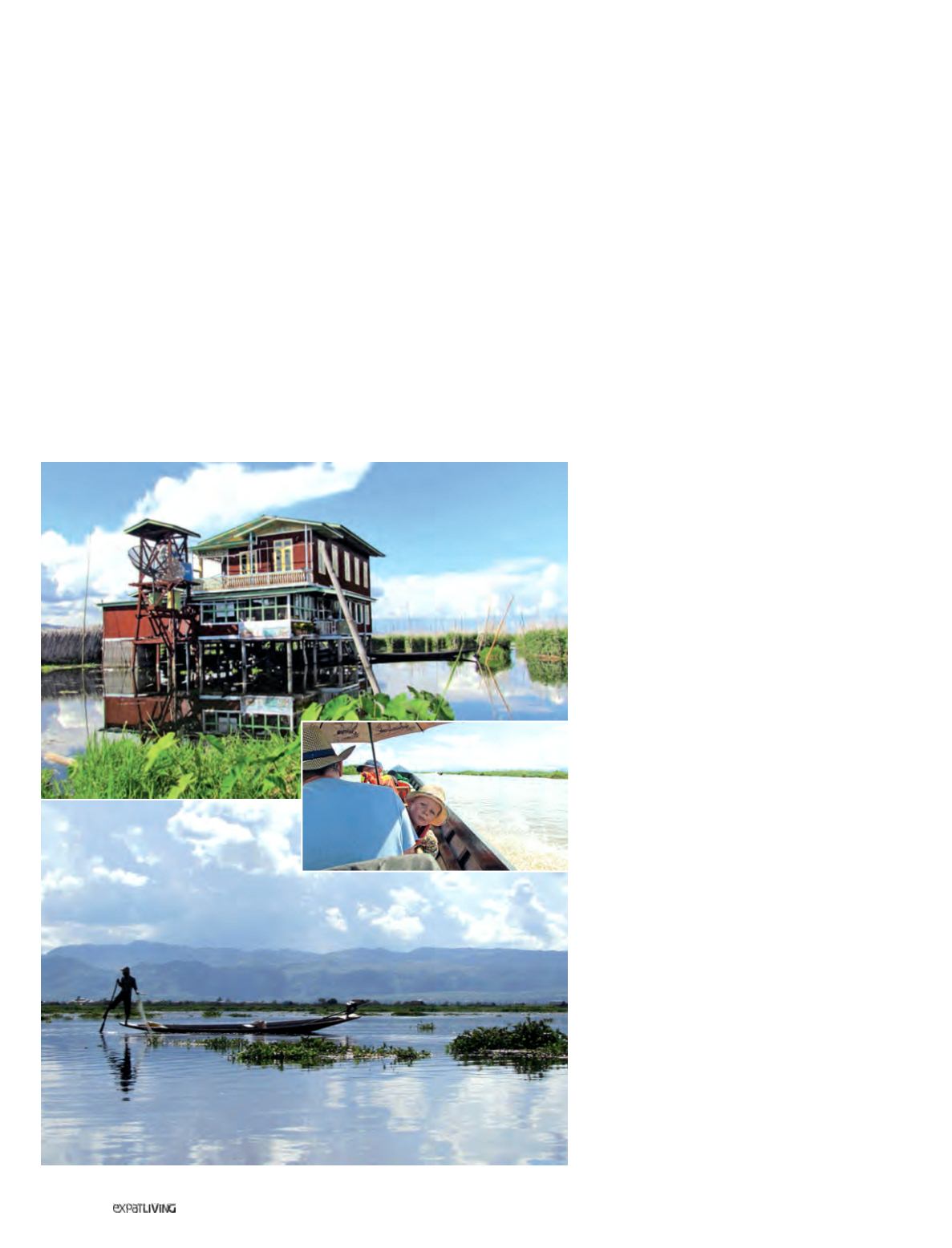

TRAVEL
218
January15
covered them with to save them from
marauders), gold and red spires, and
an ancient palace being dug from the
earth, its layout shown by rows and rows
of red bricks and holes where columns
had been placed.
Staff at the hotel looked after Edwin
the next morning as we left at 4am for a
hot air balloon adventure.
Balloons over
Bagan
operates a fleet of deep burgundy-
coloured balloons, with traditional
French baskets capable of carrying 14
passengers and the pilot (ours a jovial
Englishman called Graeme) on a floating
journey over the treetops as the sun
rises over the plain. This was a magical
experience – the fog burning off as the
sun rose, its light bathing the temples in a
bright golden-terracotta glow. Not a bump
nor a drop, just a calm, floating sensation
with the occasional “sssshhhhhhhh”, as
the flame was increased to lift us over the
trees if we got too low.
A horse and buggy delivered us to
the port of the river later that afternoon,
and we watched the sun go down over
the Irrawaddy, with a picnic basket and
watermelon cocktails aboard one of the
old, brightly painted wooden boats that
ply the river with tourists on board.
Languid lake
The following morning we took a flight
to the Shan State (Heho), near Inle Lake;
then a drive to the colonial mountain
village of Kalaw, with its hollyhocks, crab
apples andEnglish cottages, plus a cooler
temperature and clear skies. Quite surreal.
The boys visited a sanctuary for
retired elephants, washed the elephants
in the river and played soccer with the
mahouts afterwards. The elephants are
released into the jungle each night to
forage for themselves; the place is not
set up for tourists, so you feel like you’re
involved in a real part of the working day.
Inle Lake
, our final stop in Myanmar,
is almost 3,000 feet above sea level,
which makes for amazingly clear skies
and huge white cloud formations. The
vivid orange sunsets we watched each
night from our balcony at the beautiful
Villa Inle
were breathtaking.
Not knowing what to expect on arrival,
we were bundled on to one long-tail
boat, and our luggage on to another.
The only way to get to the lake hotels
(most on stilts over the water, ours on
the shore) is by these boats. With no
time to worry, we strapped Edwin into
his life jacket and were off!
The water was glassy both days we
were there, and we loved the sense
of calm that lay over the lake, with the
famous Intha fishermen standing in their
boats, paddling with one leg as they pull
in the nets.
Over 100,000 people live on or around
the lake, which is around 22km long and
10km wide. Villages are built on top of
piles of weeds that are dug up from the
bottom of the lake and then floated; it’s
then topped with soil, on which the local
people grow vegetables, raise pigs, and
build thatched or wooden houses with
satellite dishes, bars, restaurants and
post offices.
We loved visiting the village “factories”
and watching the old ladies weaving silk
or lotus root thread, or rolling cheroots
while they laughed and chatted.
Everywhere we went, children ran out
to wave and greet us.
The renowned “forest pagodas” of
Indein are a 30-minute trip away up one
of the lake’s tributary creeks, followed
by a 10-minute walk. Here, hundreds of



















